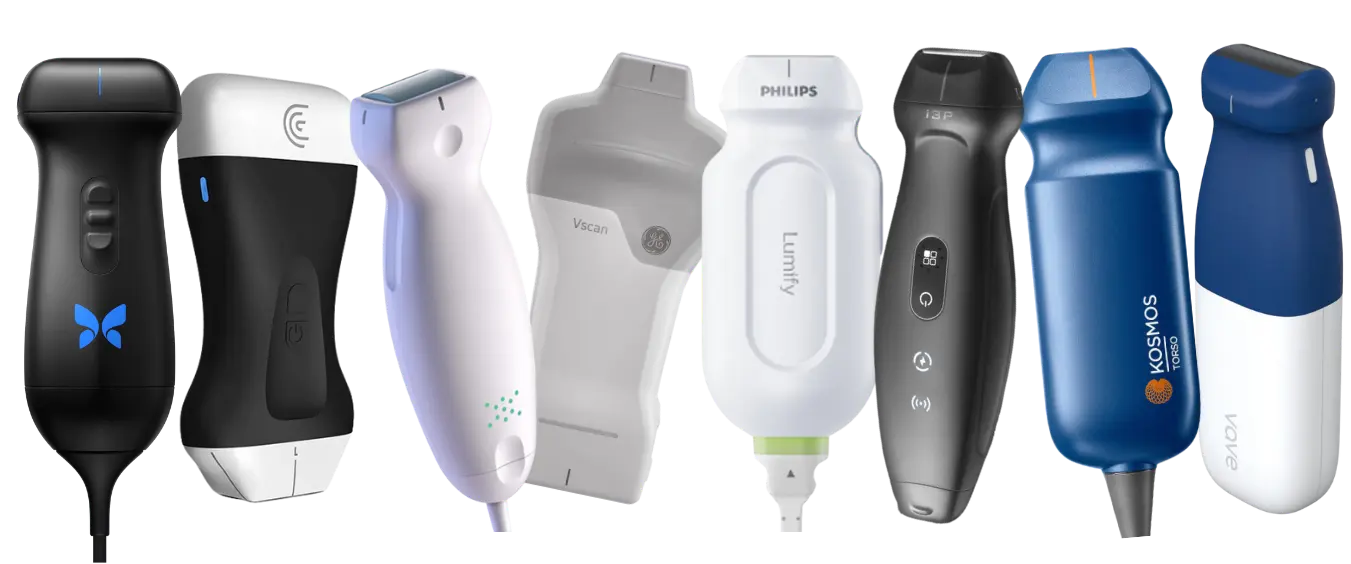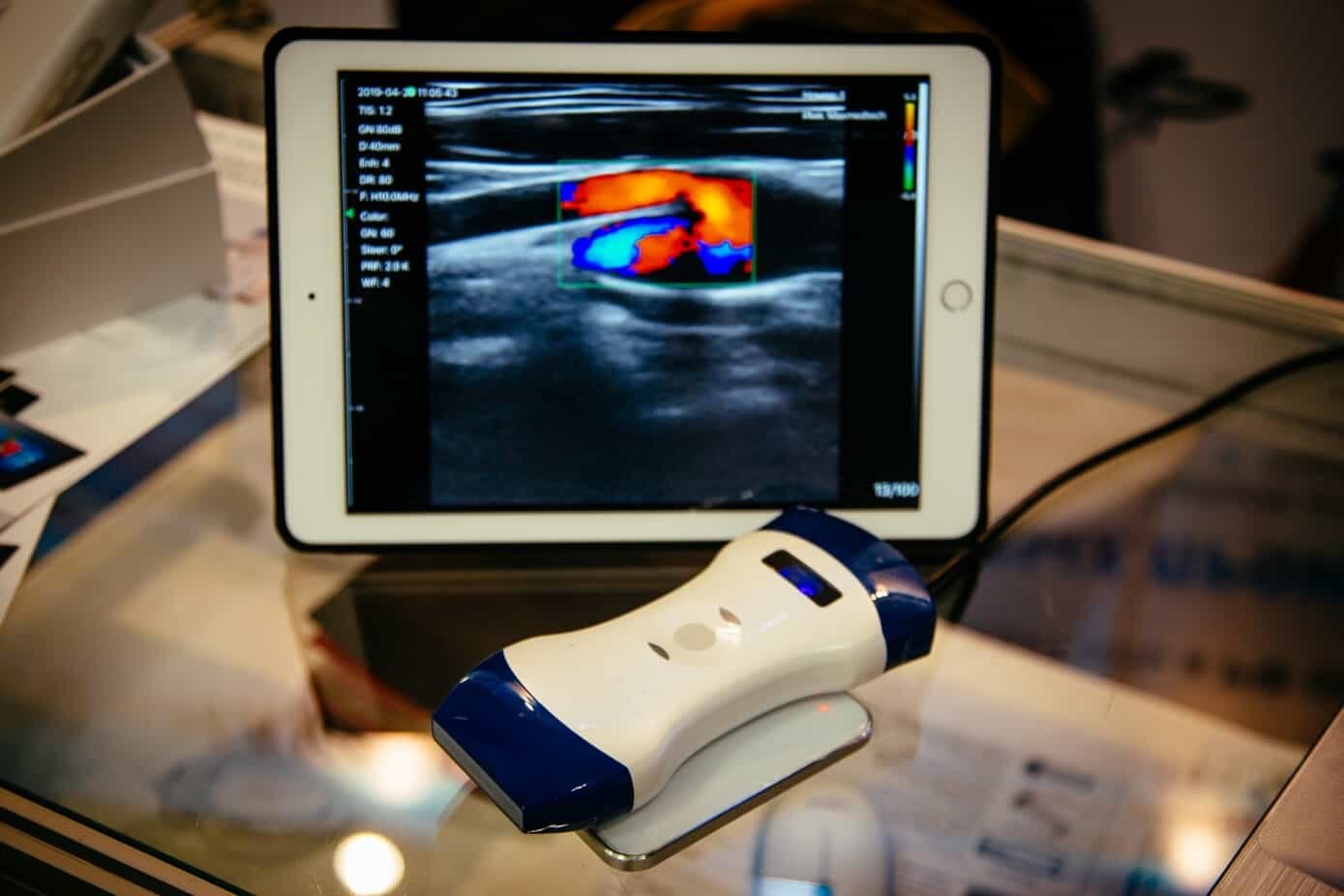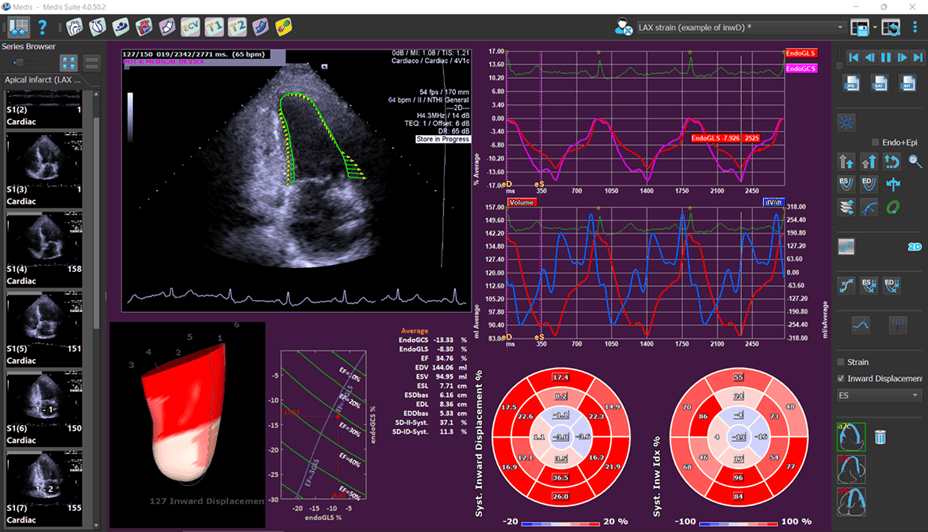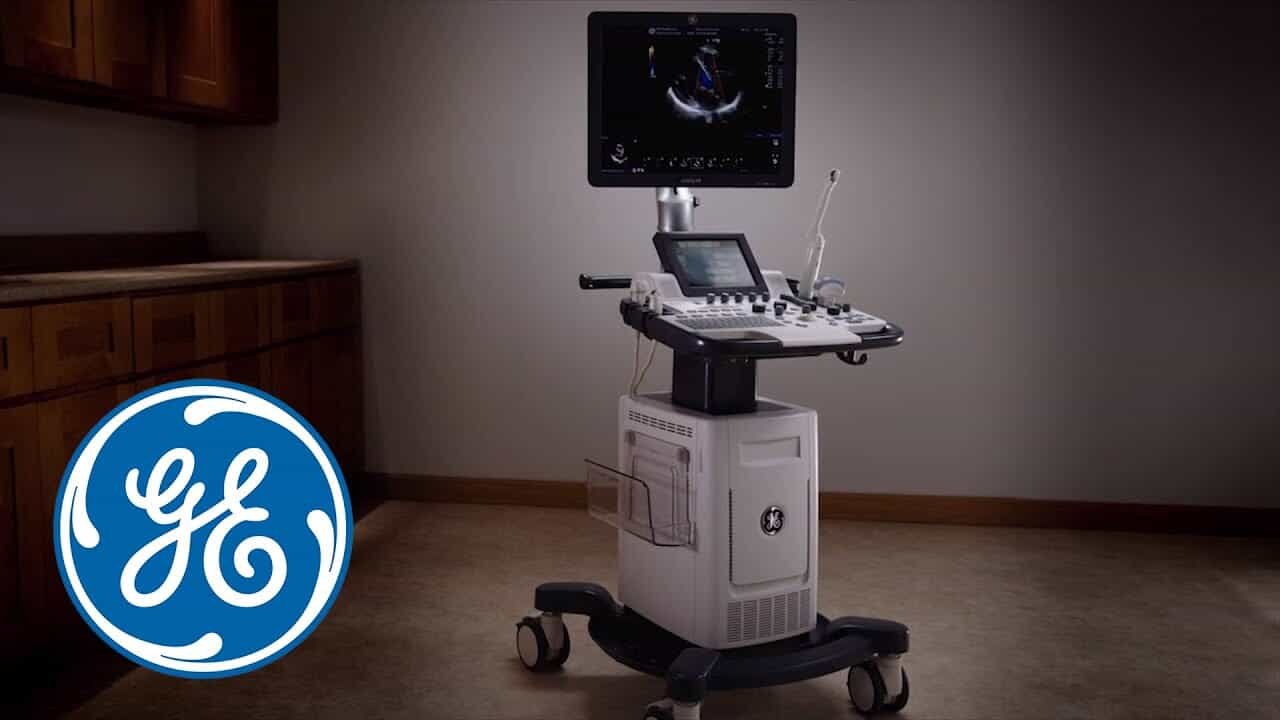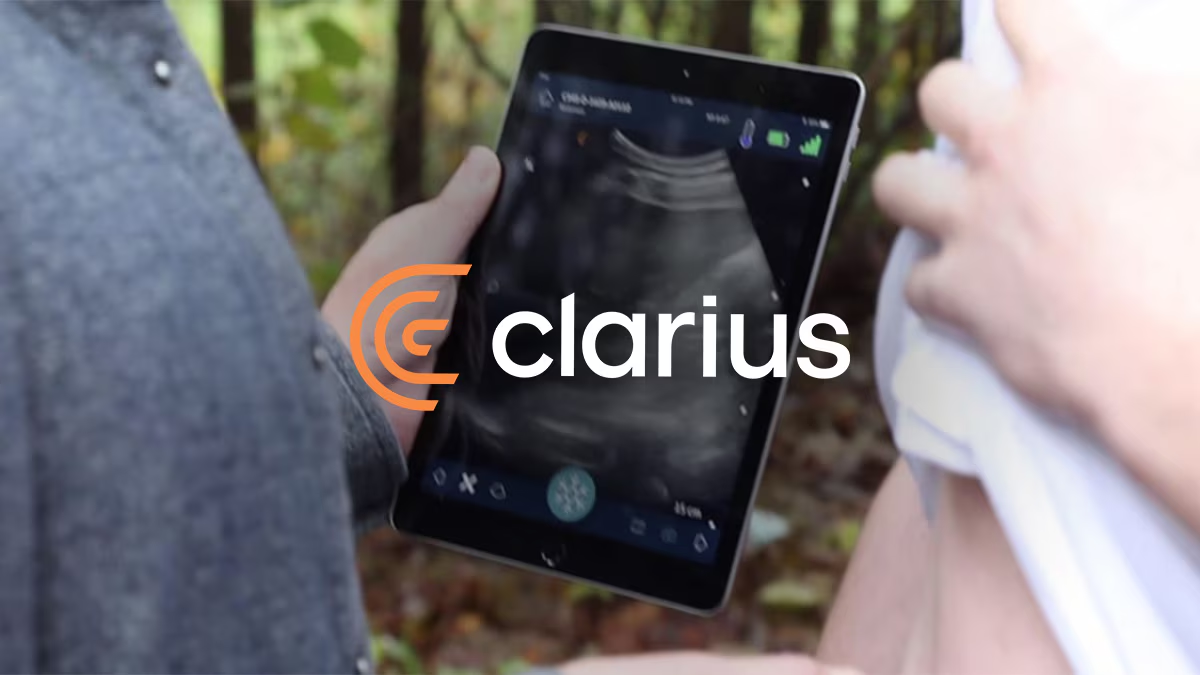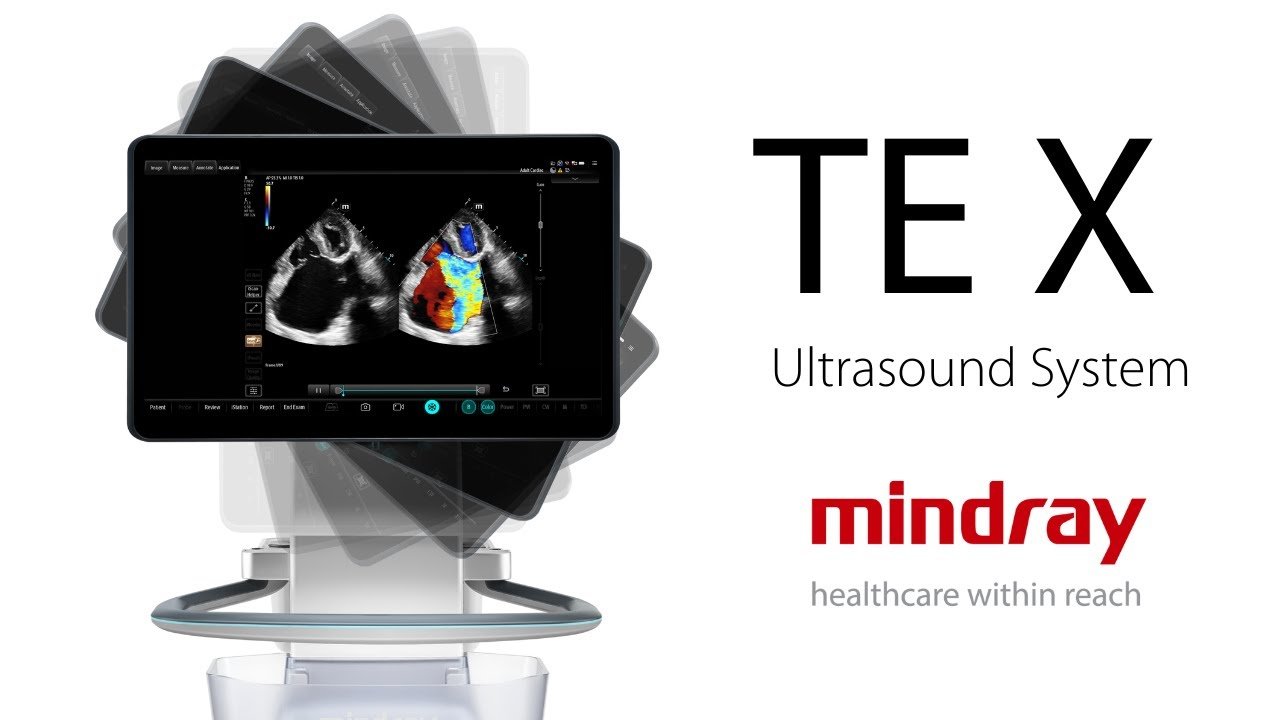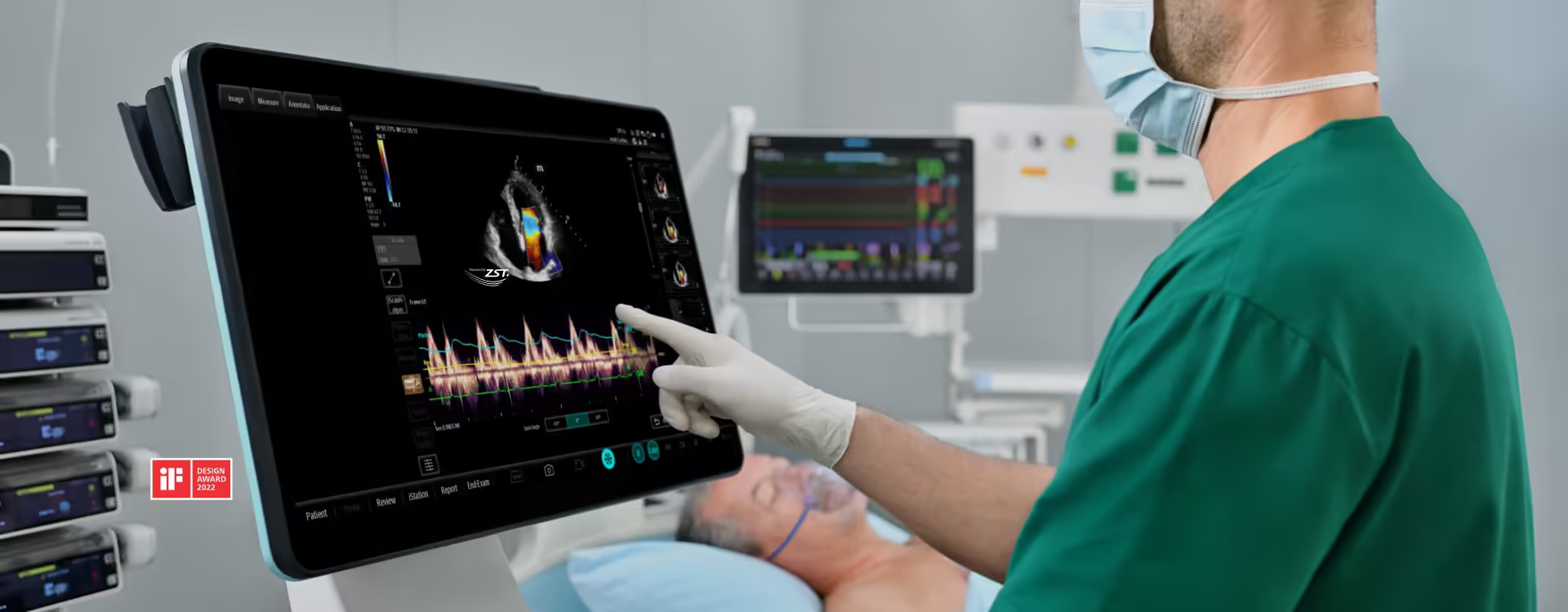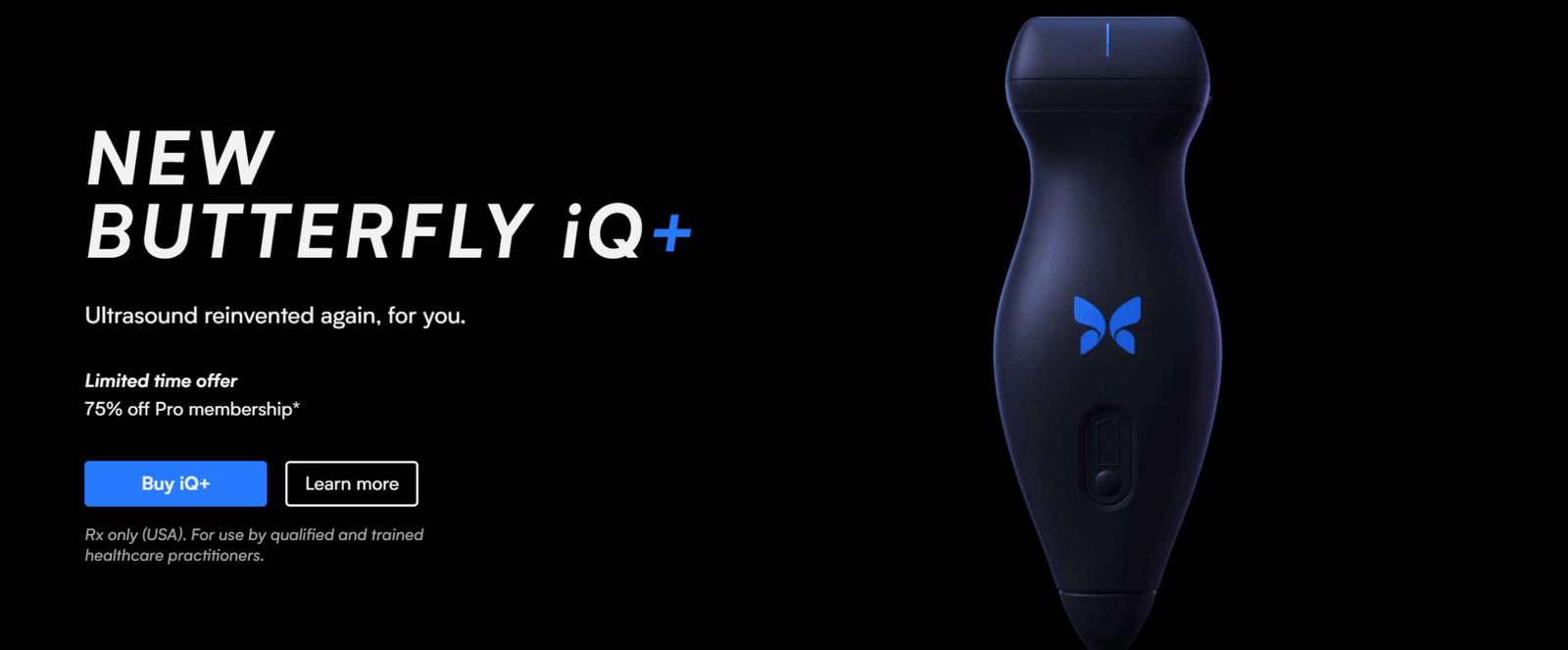When picking a new ultrasound machine for your clinic, hospital, or private practice, it is good to know what questions to ask and consider the pros and cons. However, comparing affordable ultrasound machines from different brands can be time-consuming and effort-intensive.
Many factors will affect your decision even if you have chosen the best ultrasound brands. These include value, performance, and clinical uses. Therefore, this guide comprehensively summarizes these crucial variables to help you compare ultrasound brands best.
At Marcroft Medical, we’ve had over 20 years of experience serving various healthcare providers. We see a growing need for handheld and portable ultrasound brands to support quality care. These brands help provide the best diagnoses and treatments at the point of care. Therefore, we explore in more depth the following portable brands:
- General Electric (GE)
- Clarius
- Mindray
- Butterfly Network
Factors to Consider When Making the Best Ultrasound Brand Comparison
Healthcare providers in various medical specialties rely on quality portable ultrasound brands for diagnostic and therapeutic purposes. Doctors and healthcare workers in obstetrics, cardiology, and emergency medicine need portable ultrasound devices. These devices should provide high-quality images and work well with other software and equipment. Below are the factors to consider when choosing among point-of-care ultrasound devices.
Medical Specializations or Applications
If your machine’s features don’t match the applications you need, other factors won’t matter much. For instance, you may need to look for the best portable ultrasound for use in OB/GYN. If you run a newer practice, you might focus on affordable ultrasound options for small clinics.
You should also consider what you plan to do with your ultrasound machine. Do you routinely take images of small body parts? Do you see patients with pain management needs?
Checking the apps you use will help you choose better. You will also avoid wasting money or resources on things you don’t need.
Budget and Cost Constraints
Budget is another significant factor in making the best ultrasound brand comparison. The value of your new device depends on its cost and how well it helps patients.
Also, extra costs include upgrades for equipment and software. They also cover maintenance and repairs. Additionally, there are supplies like gel and printer paper. Other factors affecting the price include:
- Brand
- Age and condition
- Whether the purpose is general or specialized
- Number of applications and features
- Image quality
- Portability
- Power capacity or battery life
Many practices turn to refurbished models to acquire affordable ultrasound machines. If the device you want is too expensive, consider buying an older model. This can give you good results and let you stay with the brand you trust.
However, ultrasound technology is always changing. Starting with an older model may disadvantage you and your practice.
Comparing portable ultrasound brands can be easier when you know what price points to expect. Low-tier models typically start at around $3,000 and can cost up to $20,000 for new equipment. If you’re willing to opt for a more reputable brand or device with better features, you might spend more than $60,000.
You usually get the best imaging quality, portability, and durability at those prices. You also get extra transducers or probes, AI features, and software integration.
Extra Equipment or Software Required
You may need extra tools or software besides the main machine and transducer. This depends on your specialty, the applications required, or patient demand.
Some of the best ultrasound devices for general practice have extra software. This software reduces speckles, allows compound imaging, and improves image quality. Consider extra analytical tools that help you interpret patterns or improve diagnostic accuracy.
Portability Needs
Portable ultrasound brands offer devices that vary in size. When using ultrasound machines at the bedside or in emergencies, think about how portable your equipment should be.
Many of the latest ultrasound systems weigh less than a pound of sugar, and some even fit in your lab coat pocket. You might think that lighter is better. However, you should also consider how size affects the lack of other tools or possible image quality issues.
Imaging Quality
The top ultrasound devices for general practice and specialties alike have high-quality imaging capabilities. Today’s best portable machines display as many as 250 shades of gray. You may need to pay more for a bigger output or color images for enhanced imagery. Don’t assume such enhancements are standard among the models you’re considering.
Customer and Technical Support

Repairs, system upgrades, and regular maintenance for portable ultrasound machines are inevitable. Knowing that your supplier has skilled people who can offer complete customer and technical support when needed is important for handling these issues well.
Also, check the coverage period of the product warranty and the service conditions that come with it. Review your contract to see if your purchase includes free technical support and training for a specified period. Other things to note include auto-renewal terms, guaranteed response times, cancellation fees, and the duration of the service contract.
Another aspect of customer support should include training. Even if your device is very user-friendly, ask what training your manufacturer or supplier can offer to staff. If they provide on-site training, they may add fees for this service.
Considering the variables above is crucial for making the best ultrasound brand comparison. Having discussed these factors, we now focus on four leading industry brands: GE, Clarius, Mindray, vs. Butterfly.
GE Ultrasound: Trusted for Hospital and Clinic Use
For many healthcare professionals, GE is a standard in the industry. For providers with many patients or those helping people with different medical problems, checking the GE brand can help. This can show which ultrasound machine is best for clinics or hospitals.
A GE ultrasound machine is renowned for its high performance, practical design, cost-effectiveness, and detailed imaging. Many professionals consider portable GE machines the top ultrasound devices for general practice because of their versatility across multiple specialties and clinical applications.
Features, Pricing, and Value
Portable GE ultrasound machines vary in features, size, and price depending on the setting and application. Think about the LOGIQ series for ultrasound devices. These devices are used for OB/GYN, breast, vascular, and abdominal care. Women’s health and obstetrics specialists can also rely on the Voluson series for advanced imaging.
The Vivid series is an option if you need the 4D multi-plane features essential for cardiac care. The Versana might be more suitable for your growing practice if you’re more budget-conscious.
Speaking of budget, prices for GE ultrasound machines vary significantly. Considering all GE models, a mid-level device can cost between $15,000 and $25,000, while higher-end models cost more than $50,000.
Durability
People in mobile healthcare or emergency medicine may find GE machines suitable for point-of-care ultrasound devices. GE designs its products to endure daily bumps and tolerate various physical conditions. Features like multi-purpose handles allow for versatile transport, and the added bumpers protect from unexpected impacts. Users can also count on extended battery life for reliable scanning, no matter where they go.
Software Ecosystem
GE has one of the best software ecosystems in the medical industry. Its artificial intelligence (AI) tools can enhance workflows and reflect GE’s commitment to accuracy and efficiency. As a user, you can rely on your machine’s cloud features. It has advanced imaging software and strong connectivity throughout your healthcare facility.
Imaging Quality
You’ll probably see differences in imaging quality among GE models. The Vivid series is better in 3D, penetration, and Doppler than the cheaper Voluson series. No matter the model, you can rely on features like harmonic imaging, beamforming, speckle reduction, and Doppler. It also includes compound imaging, needle enhancement, image presets, and user controls.
Customer Support
GE enjoys a solid reputation for reliable and comprehensive customer support and training. The company offers users several ways to request assistance. The support webpage also provides various online training programs and resources specific to different models and types of healthcare.
GE also offers warranty plans of up to three years, depending on the model. Users can get warranty coverage for probes.
Strengths and Weaknesses
One strong point is the versatility of GE’s portable machines. They can be used in many medical settings and specialties. When you compare different models, you may see consistent layouts. This means users do not have to retrain when your facility upgrades or changes to a different device.
Some GE models can be costly, making buying new and growing practices difficult. Additionally, some advanced features may require specialized training to use correctly.
Clarius Ultrasound: Wireless Innovation for Point-of-Care
Clarius has become a leader in easy-to-use handheld ultrasound machines. Founded less than five years ago, it created one of the first touchscreen systems. It offers vascular, musculoskeletal, emergency, and OB/GYN scanners.
One important Clarius handheld ultrasound device is the HD3. It has third-generation point-of-care technology. This makes it good for scanning small body parts.
Features, Pricing, and Value
A key feature of most Clarius handhelds is an easy-to-use AI app that makes operation smooth and user-friendly. Despite its rugged and robust design, it delivers high-quality images that adjust automatically.
With this portable system, you don’t have to compromise on transducer technology. Its scanning capabilities are on par with its complex, stationary counterparts. That’s primarily because each scanner has eight beamformers, compared to only one in most other brands.
If you need a machine that goes where the patients are, a Clarius handheld ultrasound machine may seem like a game-changer. This device works so well with at-home visits that many midwives use it.
The more affordable ultrasound machines start at $3,595, while the more advanced models cost $5,395. A purchase includes an annual $595 membership covering the Clarius cloud, access to advanced features, and training.
Durability
Clarius regularly drop-tests its models to withstand the most precarious environments. The model’s sealant makes cleaning and disinfecting simple, and the IPX7 immersion rating means you won’t need to worry if it gets wet.
Software Ecosystem
The membership mentioned before includes access to the brand’s cloud system, which ensures safe and quick data storage and transfer.
You will also have access to Wi-Fi and real-time imaging. This connects you with other healthcare facilities and remote care providers. The no-contact probes prevent contamination and work with iOS and Android systems.
 Imaging Quality
Imaging Quality
Clarius handheld ultrasound models feature advanced imaging capabilities, which many specialized practices rely on. These new scanners have automatic image adjustment. This is due to point-and-shoot technology, which gives better clarity and sharpness. You can override the AI technology to fine-tune the images yourself.
Customer Support
The company offers multiple ways to access technical support: via website, phone call, or email. Users find the touchscreen display easy to use and like the cloud-based membership resources.
Because of this, there may be less need for customer support. Warranty terms are one to two years with standard conditions.
Strengths and Weaknesses
Clarius handheld ultrasound machines are generally designed to be user-friendly and typically don’t require high-level skills. That means more employees in your facility can quickly learn to use it. If you are a remote healthcare provider, you will likely value the connection from the cloud service and the device’s Wi-Fi features. Also, its small size and durability make it ideal for on-the-go diagnoses and care.
If you search for reviews of this portable ultrasound brand, you may learn that some users report issues with wireless connectivity. Even though it is small and light, you may find it hard to place the probe for a good scan. This can make some patients uncomfortable. Finally, the added subscription fees may make the device more cost-prohibitive for some providers.
Mindray Ultrasound: Affordable and Feature-Rich
Mindray is well-known for its many point-of-care ultrasound devices. Medical professionals use these devices in emergency medicine, anesthesia, critical care, and other fast-paced areas.
Mindray portable ultrasound machines provide many benefits compared to other brands. They are good choices if you want affordable, low-to-mid-range models.
A key feature of Mindray is its strong focus on research and development (R&D). The company reinvests its annual revenue back into research, which takes place in its ten global R&D centers. Also, about one-quarter of Mindray personnel are researchers.
Features, Pricing, and Value
Customers can choose from many devices, including cheaper, touch-enabled machines and those with cart-based or laptop designs.
The M7 model is versatile enough to function well with musculoskeletal imaging and anesthesia. If you need a Mindray portable ultrasound device, the Resona I9T could help you. It can improve your workflow and provide high-quality images for cardiac care. The M8 also performs well in cardiovascular settings and enables service sharing.
Prices for the smallest handheld models start at $4,000. As you increase size and add more features, you could pay as much as $19,500. If you have a tight budget, remember that some new Mindray machines cost less than refurbished ones from well-known ultrasound companies.
Durability
Many Mindray portable ultrasound machines are sturdier than some GE models and less likely to break. The MX7 and M9 have magnesium alloy shells, which are strong enough to withstand virtually any environment. The Mindray models are waterproof and dustproof, making them easy to carry, and feature intuitive touch interfaces.
Software Ecosystem
The Mindray portable device’s software provides full connectivity to support the many functions you need to perform. With its Zone Sonography Technology, you can benefit from the highest level of performance and easily upgrade. The machine works with AI tools to improve image quality, which helps you make more accurate diagnoses.
Imaging Quality
Mindray machines deliver high-quality images, thanks to calculation software, single-crystal probes, AI enhancements, and 3D/4D imaging. You can also access robust scanning modes that help you adapt to changing industry and regulatory standards. If you compare the ultrasound imaging quality of Mindray and GE, you might find that Mindray performs well. However, it may not be as good for first-trimester prenatal scans.
Customer Support
Mindray’s customer and technical support is comprehensive. Customers can get standard technical help, access training resources, and take self-paced tests to improve their skills.
The company does not charge annual licensing fees. It offers regular software upgrades for the life of your device, and the warranty covers up to five years.
Strengths and Weaknesses
One of Mindray’s distinguishing characteristics is its ability to provide rapid access to shared data. A Mindray ultrasound machine can provide a good return on investment (ROI). Similar to a refurbished mid-level device from a well-known company, such as GE. The relatively extended warranty also makes this brand stand out.
However, Mindray does have limitations, including the lack of elastography, biplane imaging, and Doppler imaging. Also, you won’t get all the imaging modes and presets from any individual probe. Due to the short battery life, which lasts about 1.5 hours, it’s best to bring a backup cord.
Butterfly iQ Ultrasound: Disrupting the Industry with Single-Probe Technology
Butterfly Network is a U.S. digital health company making the Butterfly iQ Ultrasound, a new portable diagnostic machine. When you compare Clarius and Butterfly for emergency medicine, Butterfly performs better.
It has a strong reputation for imaging and assessment, even for children. Providers will also benefit from this machine for OB/GYN, cardiology, urology, ophthalmic care, and peripheral vessels.
Features, Pricing, and Value
The Butterfly IQ’s simple user interface might make it an attractive option for multiple providers with varying skill levels. The off-the-shelf mobile platform with battery capabilities also makes this series user-friendly. The Needle Viz needle-controlling feature improves accuracy with in-plane guidance and dual imaging.
The basic single-probe iQ model costs $2,000-$3,000. If you want to level up and get the iQ3, expect to pay $3,000-$4,000. The required subscription costs an additional $480 to $1,200 per year per unit.
Durability
The Butterfly features military-grade hardware, designed and extensively tested for versatile carrying and handling. Although the hardware can withstand most physical conditions, the cord could tear with excessive force. Keep in mind, the battery cannot be replaced.
Software Ecosystem
Butterfly is a portable ultrasound brand that works seamlessly with other iOS and Android devices. It allows users to ingest scans for viewing, transfer, and interpretation easily. The probe enables your hardware to communicate with your mobile devices, generating and transmitting ultrasound signals.
Imaging Quality
The Butterfly iQ ultrasound brand has seen considerable improvements in its imaging capabilities. For example, the iQ3 model yields better image resolution than earlier iterations, particularly for musculoskeletal and lung imaging. In fact, a GE Vscan vs. Butterfly iQ comparison might elicit more positive conclusions about Butterfly’s imaging quality.
The machine also features high-resolution ultrasound-on-chip technology, allowing users to visualize flow dynamics and cardiac myocardial borders. It also has several Doppler and biplane imaging modes and other enhancements. You can add NeedleViz, AI-powered calculation tools, and other advanced imaging features.
Customer Support
Butterfly iQ ultrasound devices have a three-year manufacturer’s warranty against malfunctions and faulty parts. Several options exist for accessing customer and technical support. Some users say there are few troubleshooting options. They also mention that the required subscription increases the total cost.
Strengths and Weaknesses
When comparing Clarius and Butterfly IQ for emergency medicine, some users believe Butterfly is better. They say it provides faster image acquisition. The single probe, ease of transport, and competitive cost are other attractive features.
Despite the machine’s durability and enhanced performance, its battery is not replaceable, as we stated earlier. Other downsides include lower cardiac image quality, a tendency to overheat, and a relatively large probe footprint.
The table below summarizes this comprehensive assessment of all four portable ultrasound brands:
|
|
Applications |
Pricing |
Durability |
Software |
Imaging |
Customer Support |
|
GE |
General, emergency, OB/GYN |
$15,000-$50,000+ |
Multipurpose handles, bumpers |
AI and cloud capability, advanced imaging |
Quality varies among models |
Robust service, up to three-year warranty, various training programs and support “clubs” |
|
Clarius |
Vascular, musculoskeletal, emergency, OB/GYN, small parts |
$3,595-$5,395 plus $595 membership |
Sealant for cleaning and water immersion |
Clarius cloud, Wi-Fi connectivity, compatible with iOS and Android |
Automatic adjustments with Point-and-Shoot technology |
Support and training part of membership via the cloud, warranty covers 1-2 years |
|
Mindray |
Anesthesia, cardiac, musculoskeletal, emergency |
$4,000-$19,500 |
Magnesium alloy shell, versatile carry handle |
Software for easy upgrades, system integration, and enhanced performance |
Calculation software, single-crystal probes, AI enhancements, 3D/4D imaging, robust scanning modes |
Warranty up to 5 years, online training and testing |
|
Butterfly |
OB/GYN, cardiology, urology, ophthalmic care, and peripheral vessels |
$2,000-$4,000 for hardware, $480-$1,200 annual subscription |
Military-grade tested material, non-replaceable battery |
Compatible with iOS and Android, connectivity with probe |
Ultrasound-on-Chip, Doppler and biplane imaging, AI-compatible |
Three-year manufacturer’s warranty, some customer service issues |
Which Ultrasound Brand Offers the Best Value? GE vs. Clarius vs. Mindray vs. Butterfly?
This guide provides the best ultrasound brand comparison to inform your decision. Even with your busy workload, considering the pros and cons of the best machines is worth considering. You want to ensure your money leads to better medical decisions, smoother workflows, and happy patients.
Look for a reliable retailer for the best value in ultrasound devices. Choose one that has experience and can provide support.
When you work with Marcroft Medical, you enjoy a family-friendly approach. This method has helped us for over 20 years. We can discuss how many patients you see, what you need from the application, and other factors. These will help you choose the best portable machine for your clinic or practice.
For a quote, contact Marcroft Medical. They can answer your questions. They can also help you compare GE, Clarius, Mindray, and Butterfly machines. Our team members can answer your questions, provide pricing information, and offer technical guidance.


